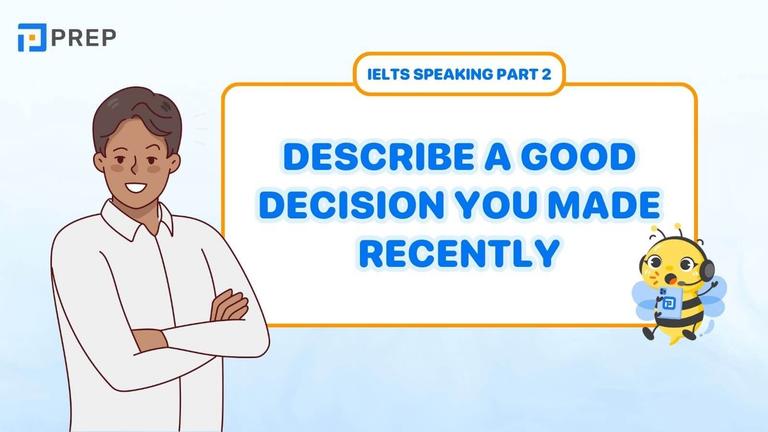The Definitive Guide to the Past Tense of Have and Its Essential Uses in English
Understanding the past tense of have forms the foundation of effective English communication and proves essential for language proficiency exams like IELTS and TOEIC. This comprehensive guide will equip you with complete knowledge of "had," covering its versatile applications in past contexts. PREP's systematic approach transforms complex grammatical concepts into clear, practical knowledge that empowers learners to communicate with confidence.

I. What exactly is the Past Tense of Have?
The past tense of have is definitively "had," serving as both the simple past tense and the past participle of have. This dual function makes "had" indispensable for expressing past possession, experiences, and forming complex tenses.
Key Functions of "Had":
-
Simple past tense: "I had a good day yesterday"
-
Past participle: "I had seen the movie before"
II. "Had" as a Main Verb: Core Uses in Simple Past Tense
When "had" functions as the primary verb, it expresses possession, experiences, or states that occurred in past timeframes. This represents the fundamental application of the past tense of have.
1. Three Primary Uses of "Had"
|
Usage Type |
Meaning |
Example |
|
Past Possession |
Things owned or held |
"She had three dogs when younger" |
|
Past Experiences |
Completed events/activities |
"We had dinner at the restaurant" |
|
Past States |
How things were |
"I had a strange feeling" |
2. Grammar Rules: Questions and Negatives
Question Formation:
-
Structure: Did + Subject + have + complement?
-
Correct: "Did you have breakfast today?"
-
Incorrect: "Had you breakfast?" or "Did you had breakfast?"
Negative Formation:
-
Structure: Subject + didn't + have + complement
-
Correct: "He didn't have enough time"
-
Incorrect: "He hadn't enough time" or "He didn't had time"
III. "Had" as an Auxiliary Verb: Perfect Tenses
Beyond its main verb role, "had" creates sophisticated tenses for precise temporal relationships. This auxiliary function demonstrates the versatility of the past tense of have in complex grammatical structures.
1. The Past Perfect Tense: Had + Past Participle
Purpose: Shows one past action completed before another past action or time. This construction utilizes have in past perfect formations.
Formation: Subject + had + past participle
Signal Words:
-
Already, before, by the time, after, when, as soon as
Examples:
|
Situation |
Past Perfect Example |
|
Sequence of events |
"She had already left when I arrived" |
|
Action by specific time |
"By 2020, he had lived there 10 years" |
|
Cause and effect |
"I was tired because I had worked all day" |
2. Understanding "Had Had"
When "have" is the main verb in past perfect, "had had" becomes grammatically correct. This demonstrates how the past tense of have can appear twice in one sentence:
-
First "had" = auxiliary verb
-
Second "had" = past participle of have
Examples:
-
"By 2020, she had had that car for ten years"
-
"He mentioned he had had similar problems before"
IV. Expressing Past Obligation: "Had To"
1. Past Necessity with "Had To"
The past tense of have appears in obligation structures through "had to," expressing past necessities and requirements.
Structure: Subject + had to + base verb
Examples:
|
Context |
Example |
|
Time requirement |
"I had to wake up early for my flight" |
|
Weather necessity |
"They had to cancel due to snow" |
|
Academic obligation |
"She had to study hard for exams" |
2. Lack of Past Obligation: "Didn't Have To"
Structure: Subject + didn't have to + base verb
Examples:
-
"We didn't have to wear uniforms at school"
-
"I didn't have to wait long for the bus"
V. Advanced Uses and Common Patterns
1. "Had" in Conditional Sentences
Third Conditional Structure: If + past perfect, would have + past participle
The past tense of have enables hypothetical past scenarios through conditional structures.
Example: "If I had known you were coming, I would have prepared dinner"
2. Causative Structure with "Had"
Pattern: Subject + had + object + past participle
Examples:
|
Service |
Causative Example |
|
Car repair |
"I had my car fixed" |
|
Hair styling |
"She had her hair cut" |
|
House cleaning |
"They had their house cleaned" |
VI. Frequently Asked Questions
Q1: What is the past participle of "have"? A: The past participle of have is "had," identical to its simple past form.
Q2:1 How do I distinguish have in past simple from perfect tenses? A: Past simple uses "had" alone, while perfect tenses combine "had" with other past participles.
Q3: How do I know if "I'd" means "I had" or "I would"? A: Context determines meaning:
-
"I'd seen it" = I had (past perfect)
-
"I'd like it" = I would (conditional)
Q4: Can "had" form continuous tenses? A: Yes, in Past Perfect Continuous: Subject + had been + verb-ing
-
"She had been waiting for an hour"
VII. Summary of "Had" usage
|
Function |
Structure |
Purpose |
Example |
|
Simple Past |
Subject + had |
Past possession/experience |
"I had lunch" |
|
Past Perfect |
Subject + had + past participle |
Earlier past action |
"I had eaten before arriving" |
|
Past Obligation |
Subject + had to + base verb |
Past necessity |
"I had to leave early" |
|
Causative |
Subject + had + object + past participle |
Arranged service |
"I had my car washed" |
Understanding the past tense of have and its applications forms the foundation for advanced English communication. The versatility of "had" enables precise expression of temporal relationships, past obligations, and complex narrative structures essential for academic and professional success.
Continue developing your English mastery through PREP's interactive grammar courses, where guided exercises reinforce the past tense of have concepts in practical contexts. Explore our comprehensive resources on English verb tenses and advance your communication skills with confidence. With consistent practice and PREP's systematic support, achieving English fluency becomes an attainable goal that opens doors to academic success and professional opportunities.

Hi I'm Chloe, and I am currently serving as an Product Content Administrator at Prep Education. With over five years of experience in independent online IELTS study and exam preparation, I am confident in my ability to support learners in achieving their highest possible scores.
Comment
Premium content
View allPersonalized roadmap
Most read












